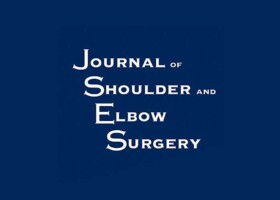
Authors:
Peter J. Millett, MD, MSc, Simon A. Euler, MD, Grant J. Dornan, MSc, Sean D. Smith, MSc, Tyler Collins, MD, Max P. Michalski, MSc, Ulrich J. Spiegl, MD, Kyle S. Jansson, BS, Coen A. Wijdicks, PhD
Abstract:
Treatment of shoulder arthritis in patients younger than 50 years remains controversial. Total shoulder arthroplasty has limitations in this age group and is frequently avoided because of concerns of premature glenoid component failure. Therefore, a number of joint-preserving, biologic procedures have been attempted, the majority of which have involved nonanatomic soft tissue interpositions to resurface the glenoid. The results of these procedures are generally inconsistent and have not been durable, leading researchers to consider more anatomic reconstruction options.
Anatomic cartilage resurfacing procedures, such as osteochondral grafting, have had good results in the knee, elbow, and shoulder and have demonstrated recreation of native biomechanics when graft placement is flush. However, osteochondral grafting is not as well studied or established in the shoulder. This is, in part, due the large defect sizes often encountered in glenohumeral osteoarthritis that necessitate massive grafts and the difficulty in obtaining glenoid allografts due to limited supply and the considerable risk of infection during procurement. Therefore, alternative graft sources have been used. Rios and Gupta have shown that the medial tibial plateau is similar in size and curvature to the glenoid when it is assessed with computed tomography (CT) scans, and thus this could be a potential source for osteochondral grafts for glenoid reconstruction. Despite a lack of pre- clinical data, some surgeons have been using single allograft plugs from the medial tibial plateau or lateral tibial plafond for local glenoid resurfacing. In a study by Gobezie fresh tibial plateau grafts were used to resurface the glenoid as part of a biologic total shoulder replacement, although the grafts were not size and curvature matched to the glenoid and only partially resurfaced the glenoid. Clinical follow-up was also limited to only 1 month, so the longevity of the grafts and the long-term clinical outcomes of this procedure are unknown. Furthermore, it remains unknown whether osteochondral grafting of the glenoid could compromise subsequent glenoid prosthetic replacement. Small plugs may be insufficient to treat the cartilage loss in many cases, and there have been no reports of resurfacing of the entire glenoid with hyaline cartilage.
The purpose of this study therefore was to assess contact pressures of transplanted massive osteochondral allografts harvested from the medial tibial plateau to resurface the glenoid. In addition, CT matching was used to determine if this would improve biomechanical results. Intact glenoids were compared with glenoids grafted with unmatched medial tibial plateaus and CT-matched medial tibial plateau grafts. The precision of the surgical technique was assessed by transferring the contralateral glenoid as the donor to the opposite glenoid as the recipient in a right and left matched pair to serve as an internal control. The principal outcome measure was peak contact pressures relative to the native intact state. Secondarily, we evaluated the stability of the grafts by qualitative measures.
For the complete study: The ability of massive osteochondral allografts from the medial tibial plateau to reproduce normal joint contact pressures after glenoid resurfacing: the effect of computed tomography matching
